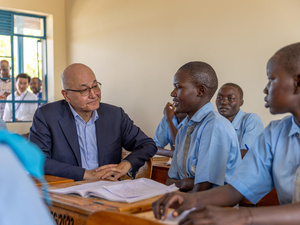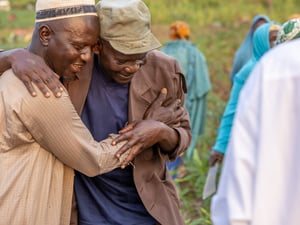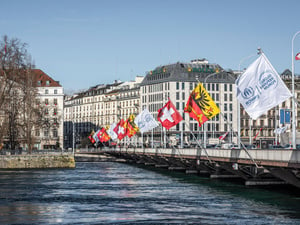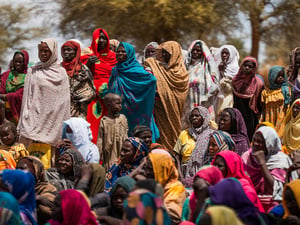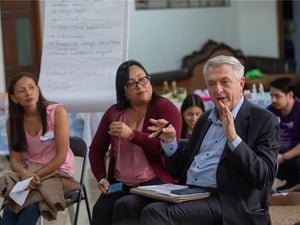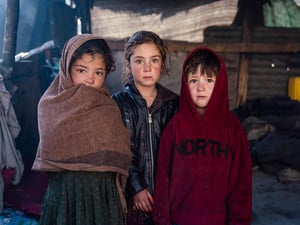Twelve years on, Syrian refugees face deepening debt and hunger
When she finds some, she lays it out under the sun for days, waiting for it to dry out and for the mites to crawl away. Then, she washes it and cooks it for her family. She cannot afford to buy cooking oil or butter. Instead, she uses the white fat the nearby butcher throws away.
“I know the white fat is not good for our health, but I can’t just feed my children boiled rice and burghul. They are men and boys growing up and they need strength to be able to continue to work,” Khadra explains.
When money allows, she also buys stale bread, sprinkling drops of water on top to make it softer.
Khadra lives in northern Lebanon, in an informal refugee settlement, where she shares a one-room tent with her five children, her daughter-in-law and three grandchildren.
She currently owes three months’ rent for the tent, which she does not know how she will repay, and lives in constant fear of being evicted.

Khadra shares a meal with her daughter-in-law and nephew inside the one-room tent that shelters her and nine other family members.
Every year, life has got harder for Khadra and her family in Lebanon, which remains the country hosting the largest number of refugees per capita worldwide and is now facing the worst economic crisis in its modern history. Prices of essential goods have skyrocketed and the currency has lost over 95 per cent of its value, leaving vulnerable families unable to afford even the simplest ingredients such as rice or potatoes. Ninety per cent of refugee families in Lebanon now need humanitarian assistance to survive.
“The last two years have been the worst,” Khadra says.
Like other vulnerable refugees in Lebanon, she receives assistance from UNHCR, the UN Refugee Agency. But the rising prices mean that all her assistance goes to buying cooking gas, and Khadra has to scramble to provide everything else her family needs such as food, rent and medicines.
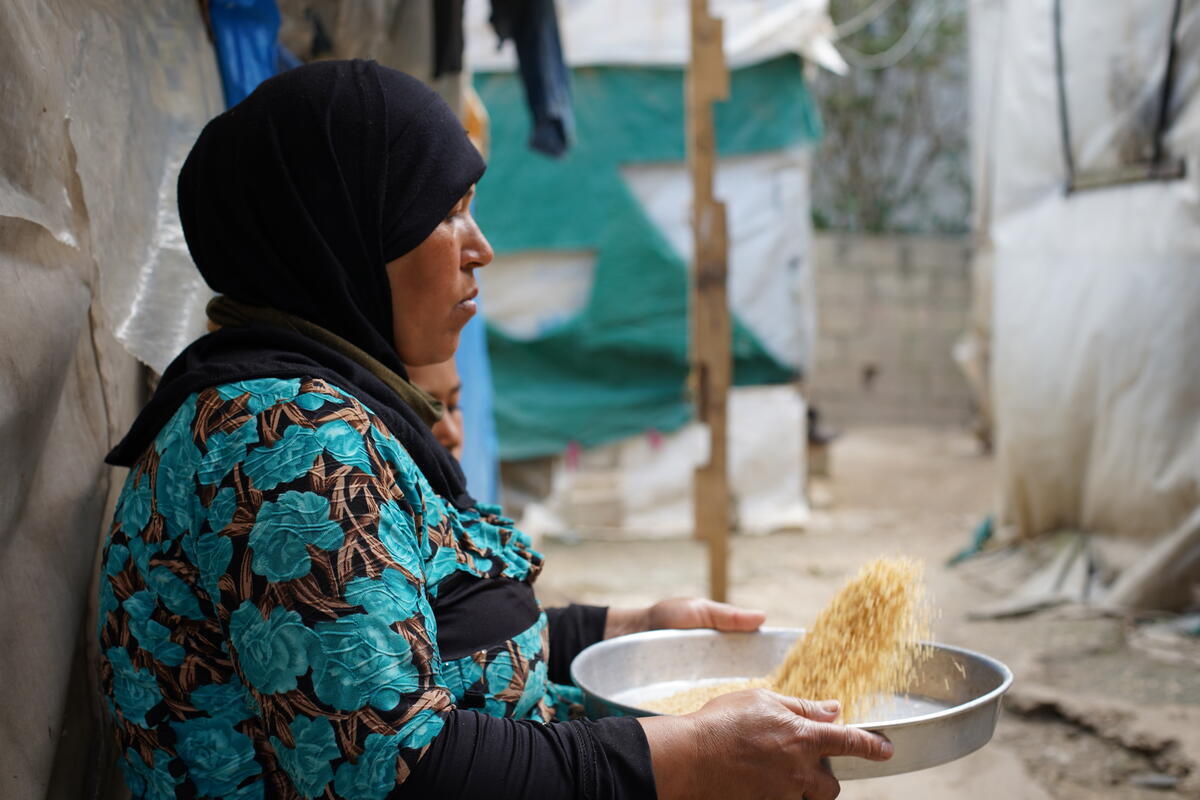
Khadra cleans lentils outside her tent.
Over the years, Khadra has been forced to make many hard decisions. The most difficult was sending her son Adnan to sell tissues and on the streets and to collect scrap metal that he resells at feeble prices. Adnan arrived in Lebanon when he was only 3 years old and never had a chance to go to school. Now 15, he has very few prospects in life.
“My son wakes up every day at 6 in the morning to sell tissues on the highway and never comes back before 10 or 11 at night. On a good day, he can make around 200,000 Lebanese lira (around US$2) while on other days, he sells nothing at all,” says Khadra.
These daily struggles have found some relief in the support and compassion Khadra and her family have received from local Lebanese who sometimes help them with food and clothing, despite their own hardships. Half of the Lebanese population is living below the poverty line and they too are seeing their access to basic goods and services diminishing day by day.
Some 6.8 million Syrians continue to live as refugees worldwide, of whom 5.5 million are hosted in countries neighbouring Syria.
In Jordan, 660,000 registered Syrian refugees are trapped in exile. About 135,000 of them have found sanctuary in refugee camps such as Za’atari and Azraq while the rest live in host communities. Those who could at first rely on savings or support from host families are now increasingly in need of help to cover their basic needs. About four out of five Syrian refugees in Jordan are living under the national poverty line of about US$3 a day.
Iraq is another major host country for Syrians, with some 260,000 refugees, of whom 86 per cent live in camps and remain food insecure or vulnerable to food insecurity. In Egypt, UNHCR has registered more than 145,000 Syrian refugees. UNHCR data shows that an estimated 66 per cent of refugees and asylum-seekers in Egypt were living below the national poverty line in 2022.
Despite generous donor support, the needs in countries hosting Syrian refugees continue to grow, forcing UNHCR and other humanitarian agencies to make their own difficult decisions. Last year’s Regional Refugee and Resilience Plan (3RP), which is co-led by UNHCR and the UN Development Programme, was only 39 per cent funded. Without steady and reliable funding, more Syrian refugees will plunge deeper into despair in 2023.
For Khadra, as for many Syrian refugees, hopes for a better future are fading away the longer she remains in exile.
“For me, it is not a matter of dignity anymore, it is a matter of survival” Khadra sighs.
Key figures on Syrian refugees:
- Since the beginning of the Syria crisis 12 years ago, more than 14 million Syrians have been forced to flee their homes in search of safety.
- In 2023, the 3RP seeks US$5.7 billion to reach Syrian refugees and host community members with assistance.
- In Lebanon: 58% of Syrian refugee families live in inadequate and unsafe shelters, and 67% are moderately or severely food insecure.
- In Jordan: 77% of refugees living in host communities (non-camp refugees) are food insecure or vulnerable to food insecurity; 49% of households are living below the abject poverty line.
- In Turkiye: 90% of refugees cannot fully cover their monthly expenses or basic needs, while 94% have adopted survival strategies such as reducing food consumption or borrowing money.


